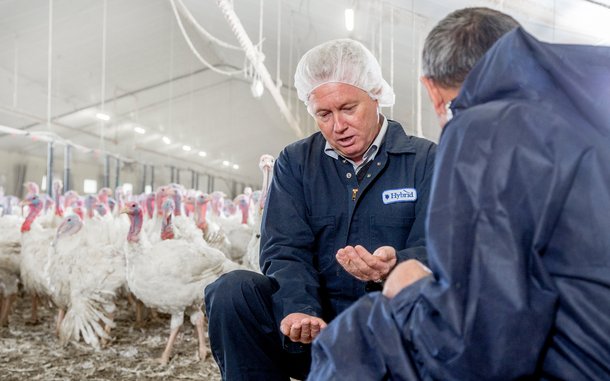Keep your birds comfortable
Birds need to be raised in comfortable temperatures and clean air. Brooding requires a more specific environment until the birds' thermoregulatory system has developed.
For information on brooding click here.
From 5 weeks of age onward, the guidelines become more general.
Reference the table below for our key recommendations and click through our Environmental Controls library for information on how to maintain these levels.
| Environment | Measure |
|---|---|
| Carbon Dioxide | < 2,500 ppm |
| Carbon Monoxide | < 20 ppm |
| Ammonia | < 25 ppm |
| Humidity | < 60% |
Ventilation
Minimum ventilation involves directing the exterior air into the barn, mixing and circulating this air through the barn. It is generally used in cold weather and in brooder houses. When set up properly, minimum ventilation will ensure good litter quality, comfortable birds, and efficient energy use.
Click here to learn how to set up and manage proper ventilation.
Tunnel ventilation is the most effective method of ventilation when barn temperatures reach high temperatures in the summer months.
Click here to learn how to set up and manage tunnel ventilation.
All turkey growers should measure and monitor gases, similar to how they monitor temperature. Keeping tabs on these elements will make a big difference in controlling air quality.
Download our Ventilation Resources
Temperature
Turkeys, no matter their age, should be raised in comfortable temperatures. Recommendations in the first few weeks of brooding are very important to get poults off to a good start.
Extreme weather solutions
In cold weather, minimum ventilation is the most effective method of ventilating the barn. During the cold season, be sure to eliminate unwanted drafts, condition the incoming air, and control air quality.
Cool cells and foggers in combination with air speed can provide relief for birds in extremely hot conditions. In warm weather be sure to monitor and control humidity levels.

Looking for more information?
Click below to get in touch with a member of our team. They'll be happy to give you the answers you're looking for.
